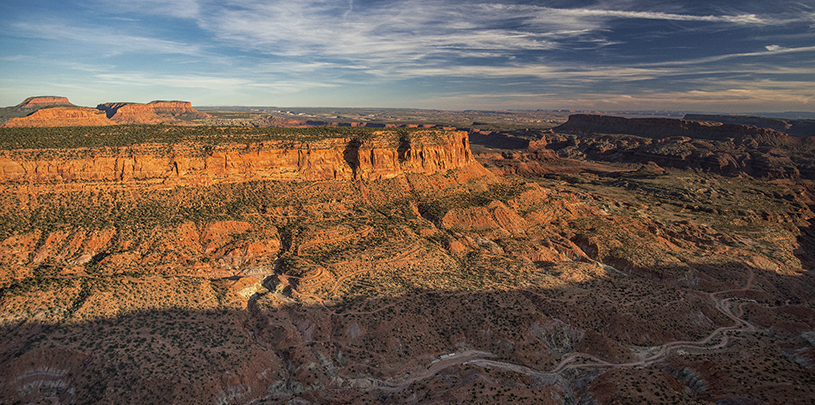Guest post by Stewart B. Koyiyumptewa, the Hopi Tribe, Hopi Cultural Preservation Office
The following is excerpted from a talk delivered at the 2022 Grand Staircase-Escalante Symposium, “Ways of Understanding and Protecting Land and Water Resources in the Grand Staircase-Escalante Region.” Explore the symposium’s full archive of video recordings ›
Springs are alive
Paahu is all standing water. Nöönganva is all springs.
The Hopi people believe that the springs are alive — that all springs are alive — and that they connect the oceans, groundwater resources, and the clouds who we consider our ancestors.
These different resources of water communicate with one another based on the prayers received from the Hopi people. Prayer offerings are made for springs so that they do not run dry and continue to produce sustenance to all forms of life.
When springs dry, they lose that communication…It is through that communication that the springs and the Cloud People, our ancestors, will tell one another to visit certain people’s fields, for Hopi people are dry farmers. They [the Cloud People] select those people who are humble in their mind and respect all forms of life and people and treat everyone with respect.
That goes the same with the villages and the different clans that perform ceremonies. If they do the performance of their ceremonies right, this communication is important so that they [the Cloud People] can continue to provide rain and sustenance through their religious performances.
The Hopi people have relied on springs in all phases of their existence and migration to their current homelands. Every group of migrating Hopi clans had scouts seek out springs as they traveled from Mesoamerica and from the northern parts of our continent.
The Hopi people are indebted to springs for their livelihood and where they now call their permanent homeland, on the Hopi tribal land today.
Cultural teachings about springs
Hopi families at my village of Hotevilla — and I don’t want to speak for all the 11 other villages because they may have different perspectives on springs — but at least at my village, Hotevilla…we teach our children that springs are sacred at a very young age. Families will teach their loved ones that springs and bodies of water in general are powerful.
One of the instructions that one receives is not to approach springs or be in the vicinity during midday because it is during this time that the power of the springs emerges and it is at its height in terms of spirituality.
So we also teach our children and our loved ones that springs can also take your life, if you’re not careful and respectful. And the different types of deities who are associated with these springs usually emerge during this time.
So you’ll have women…who are tending their terrace gardens…leave prior to the noon hour.
The Hotevilla Spring is one of the major springs on Hopi that is still being used today.
Spring restoration projects
The Hopi Cultural Preservation Office has participated in several spring restoration projects.
One project collaborated with the Kaibab National Forest on Forest Service land at the great Big Springs site. The other was a collaborative project with Alpine Archaeological Consultants, Applied Archaeology International, and the Colorado Department of Transportation on Hopi tribal lands.
The important concept of these two springs restoration projects is that it involved Hopi youth.
Involvement of Hopi youth is a key component…understanding of the importance of springs…because they will be the ones to oversee the upkeep of this valuable resource.
Collaborating with federal land managers
The Hopi Cultural Preservation Office would like to collaborate with Grand Staircase-Escalante National Monument and other national parks and springs restorations projects. With these potential collaborative projects, we can do our part in combatting climate change — that is important; that is impacting the entire world today.
It is our hope that once we can restore these springs, the springs can hear our prayers and send blessings of rain and of much-needed snow so that we can continue to take advantage of those offerings and live our current way of life.
Kwakwhá – Thank you.




